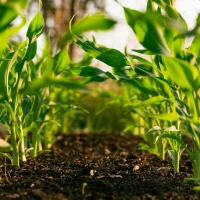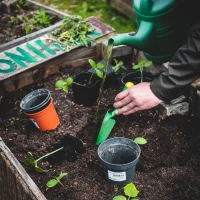In recent years, there has been a growing trend towards sustainable agriculture practices and the farm-to-table movement. Consumers are becoming increasingly aware of the impact their food choices have on the environment, animal welfare, and their overall health. As a result, there has been a surge in demand for locally sourced, organic, and sustainably produced food.
This article will delve into the various sustainable agriculture practices that are spearheading the farm-to-table revolution. From regenerative farming and organic farming to community-supported agriculture and permaculture, we will explore the 23+ best practices that promote a more sustainable and ethical food system.
The Importance of Sustainable Agriculture
Sustainable agriculture is an approach to food production that aims to minimize negative environmental impacts, conserve resources, support local communities, and promote long-term ecological balance. It is a response to the detrimental effects of conventional industrial farming methods, such as excessive use of chemical fertilizers and pesticides, over-reliance on monocultures, and the degradation of soil health bold and the beautiful recaps spoilers.
By embracing sustainable agriculture practices, we can ensure the availability of nutritious food for future generations, protect biodiversity, reduce greenhouse gas emissions, and enhance the livelihoods of farmers.
Regenerative Farming
Regenerative farming is a holistic approach to agriculture that seeks to rebuild soil health, increase biodiversity, and enhance ecosystem services. It goes beyond sustainability by actively restoring degraded land and capturing carbon from the atmosphere.
Some key practices that fall under regenerative farming include:
- Cover cropping: Planting cover crops, such as legumes and grasses, between cash crops to protect soil from erosion, suppress weeds, and fix nitrogen.
- Crop rotation: Alternating different crops in a specific sequence to improve soil health, disrupt pest cycles, and decrease the need for synthetic inputs.
- Agroforestry: Integrating trees and shrubs into farming systems to provide shade, windbreaks, and habitat for beneficial insects and wildlife.
- No-till farming: Minimizing soil disturbance by eliminating or reducing plowing, which helps retain moisture, preserve soil structure, and increase organic matter content.
Organic Farming
Organic farming is a method of agriculture that avoids the use of synthetic fertilizers, pesticides, growth regulators, and genetically modified organisms (GMOs). It relies on natural processes and techniques to enhance soil fertility, control pests and diseases, and promote biodiversity.
Key principles of organic farming include:
- Soil health: Organic farmers focus on building and maintaining healthy soils through the use of compost, crop rotations, and organic matter inputs, which improve water holding capacity and nutrient availability.
- Biodiversity conservation: Organic farms strive to protect and promote biodiversity by avoiding the use of synthetic chemicals that can harm beneficial insects, birds, and other wildlife.
- Animal welfare: Organic livestock farming emphasizes the ethical treatment of animals, such as providing access to pasture, avoiding the use of growth hormones and antibiotics, and ensuring humane slaughter practices.
Permaculture
Permaculture is a design system that aims to create sustainable and self-sufficient human settlements by mimicking natural ecosystems. It integrates regenerative agricultural practices, ecological design, and community building to create resilient and productive landscapes.
Key features of permaculture include:
- Food forests: These are designed to resemble natural forests, with multiple layers of edible plants and trees that mimic the structure and functions of a natural ecosystem. Food forests enhance biodiversity, provide a diverse range of food crops, and require minimal inputs.
- Water management: Permaculture emphasizes the capture and efficient use of water by implementing techniques such as rainwater harvesting, swales, and ponds. These strategies help conserve water and reduce dependence on irrigation.
- Zone planning: Permaculture uses zoning to optimize the placement of different elements on the site, based on their frequency of use and inputs required. This reduces energy waste and increases efficiency in food production.
Agroecology
Agroecology is an interdisciplinary field that combines principles of ecology, social sciences, and agronomy to develop sustainable farming systems. It focuses on understanding and enhancing the interactions between plants, animals, and the environment.
Key practices within agroecology include:
- Polyculture: Growing multiple crops together in the same field rather than monocultures. This promotes biodiversity, pest control, and nutrient cycling.
- Biological pest control: Using beneficial insects, birds, and other organisms to control pests instead of relying on synthetic pesticides. This reduces the negative impacts on both the environment and human health.
- Crop-livestock integration: Combining crop production and livestock rearing in a way that maximizes resource use and enhances nutrient cycling. This can involve rotational grazing, integrating animals into cropping systems, or utilizing manure as fertilizer.
Community-Supported Agriculture (CSA)
Community-supported agriculture (CSA) is a model of food production and distribution that connects consumers directly with local farmers. Customers typically pay an upfront subscription fee, which provides farmers with the necessary capital to cover production costs. In return, subscribers receive a regular supply of fresh and seasonal produce.
Benefits of CSA include:
- Close relationship between farmers and consumers: CSA fosters direct communication, trust, and transparency between farmers and consumers. It allows consumers to have a deeper understanding and connection to the food they eat.
- Support for local farmers: By subscribing to a CSA, consumers ensure that their money goes directly to farmers, providing them with financial stability and encouraging sustainable farming practices.
- Access to fresh, seasonal, and local produce: CSA members have access to a wide variety of fresh, locally grown fruits, vegetables, and other farm products. This reduces food miles, supports local economies, and promotes sustainable agriculture.
Vertical Farming
Vertical farming is a method of growing crops indoors, in stacked layers or vertically inclined surfaces, using artificial lighting, climate control, and hydroponic or aeroponic systems. This innovative approach allows for year-round production of crops in urban areas, using less space and resources compared to traditional farming methods.
Benefits of vertical farming include:
- Conservation of resources: Vertical farming requires significantly less water, land, and pesticides compared to conventional agriculture. It also reduces the need for transportation, as the farms are often located near urban areas.
- Increased food security: Vertical farms can produce crops in any season and in any location, reducing dependence on external food suppliers. This enhances food security and resilience, especially in regions with limited arable land.
- Urban revitalization: Vertical farms can be integrated into urban settings, revitalizing vacant or underutilized buildings. They can contribute to the greening of cities, provide job opportunities, and improve the quality of life for urban dwellers.
Comparison Chart: Sustainable Agriculture Practices
| Sustainable Agriculture Practice | Description | Benefits |
|---|---|---|
| Regenerative farming | A holistic approach to agriculture that focuses on rebuilding soil health, increasing biodiversity, and capturing carbon from the atmosphere. | - Improved soil fertility and structure \n- Enhanced biodiversity \n- Carbon sequestration |
| Organic farming | A method of agriculture that avoids the use of synthetic fertilizers, pesticides, and GMOs, relying on natural techniques to promote soil health and biodiversity. | - Reduced exposure to harmful chemicals \n- Improved soil fertility and water retention \n- Sustainable pest management |
| Permaculture | A design system that aims to create sustainable and self-sufficient human settlements by mimicking natural ecosystems. | - Diverse and resilient food production systems \n- Efficient use of resources, including water and energy \n- Enhanced biodiversity |
| Agroecology | An interdisciplinary field that combines ecology, agronomy, and social sciences to develop sustainable farming systems. | - Enhanced pest control using natural methods \n- Improved soil health and nutrient cycling \n- Increased resilience to climate change |
| Community-Supported Agriculture (CSA) | A model that connects consumers directly with local farmers by subscribing for a regular supply of fresh and seasonal produce. | - Close relationship between farmers and consumers \n- Support for local farmers \n- Access to fresh, local, and seasonal produce |
| Vertical farming | A method of growing crops indoors, in stacked layers, using artificial lighting and climate control systems. | - Reduced resource consumption \n- Increased food security in urban areas \n- Urban revitalization |
Conclusion
The farm-to-table revolution is gaining momentum, with an increasing number of consumers demanding sustainable and locally sourced food. This article has explored some of the best practices in sustainable agriculture, including regenerative farming, organic farming, permaculture, agroecology, community-supported agriculture, and vertical farming.
By embracing these practices, we can create a more sustainable and ethical food system that benefits the environment, supports local communities, and promotes the health and well-being of both humans and animals. It is up to us as consumers, farmers, and policymakers to prioritize sustainable agriculture and drive the farm-to-table revolution forward.










